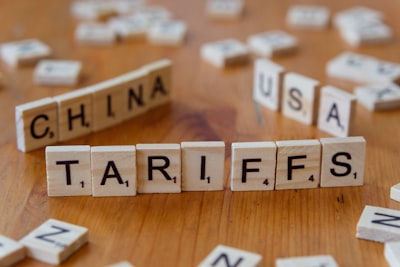Overview
'\nReciprocal tariffs' refer to trade policies in which a country imposes tariff rates on imported goods that are equivalent to those applied by its trading partners to its own exports. The principle is rooted in the concept of fairness and the pursuit of balanced trade relationships. When implemented, reciprocal tariffs are often justified as a means to exert pressure on trading partners to lower their own tariffs or remove perceived trade barriers.\n\n### Historical Background\nReciprocal tariff policy has been periodically employed in international trade relations, particularly during periods of heightened economic nationalism. In the United States, reciprocal tariff policy has oscillated in prominence, with applications ranging from the Smoot-Hawley Tariff Act of 1930 (which set high US tariffs in response to foreign tariffs) to mid-20th century trade liberalization agreements.\n\n### Key Features\n- Parity in Tariff Rates: Reciprocal tariffs are set to match or counteract the tariff rates imposed on domestic exports by another nation.\n- Negotiation Tool: Such tariffs are typically used as leverage in trade negotiations, aiming to encourage partners to make concessions or sign new trade agreements.\n- Retaliation and Reciprocity: The principle of reciprocity can lead to cycles of retaliation, where each side increases tariffs in response to the other, sometimes escalating to trade wars.\n- Sector-Specific Application: While some reciprocal tariffs apply broadly, they can also be targeted at specific industries in response to particular trade barriers.\n\n### Economic Impact\nThe use of reciprocal tariffs can have multifaceted economic effects:\n- Domestic Industry Protection: In the short term, they may offer protection to domestic industries from foreign competition.\n- Consumer Cost: Higher tariffs often result in increased prices for imported goods, potentially raising costs for consumers and downstream industries.\n- Trade Flows: Tariff escalation can disrupt established trade flows, impacting international supply chains.\n- Retaliatory Risks: Persistent application of reciprocal tariffs increases the risk of broader trade disputes and can dampen global economic growth.\n\n### International Law and Organizations\nThe World Trade Organization (WTO) promotes nondiscriminatory trade policies under its "most-favored-nation" (MFN) principle. While reciprocal tariffs are not strictly forbidden, WTO rules encourage members to minimize retaliatory actions and resolve disputes through established negotiation and arbitration mechanisms.\n\n### Examples\n- United States and China (2018–2020): A notable period of reciprocal tariff escalation occurred during the US-China trade war, where both nations imposed successive rounds of tariffs on each other's goods.\n- Early 21st Century US Policy: Reciprocal tariffs have been employed and threatened in the context of negotiating with countries with perceived unfair trade balances or barriers, including unilateral announcements of tariffs as leverage.\n\n### Criticisms and Controversies\nReciprocal tariffs are criticized for potentially sparking trade wars and for undermining the predictability and stability of global trade regulations. Critics argue that the ultimate cost of prolonged reciprocal tariff measures is borne by businesses and consumers on all sides involved. Proponents assert that such measures are necessary to correct chronic trade imbalances and ensure fair treatment for domestic industries.\n\n### Conclusion\nReciprocal tariffs remain a significant, though controversial, tool in the arsenal of trade policy measures. Their effectiveness and broader implications are the subject of ongoing debate among economists, policymakers, and international trade organizations.\n

Comments
No comments yet. Be the first to comment!